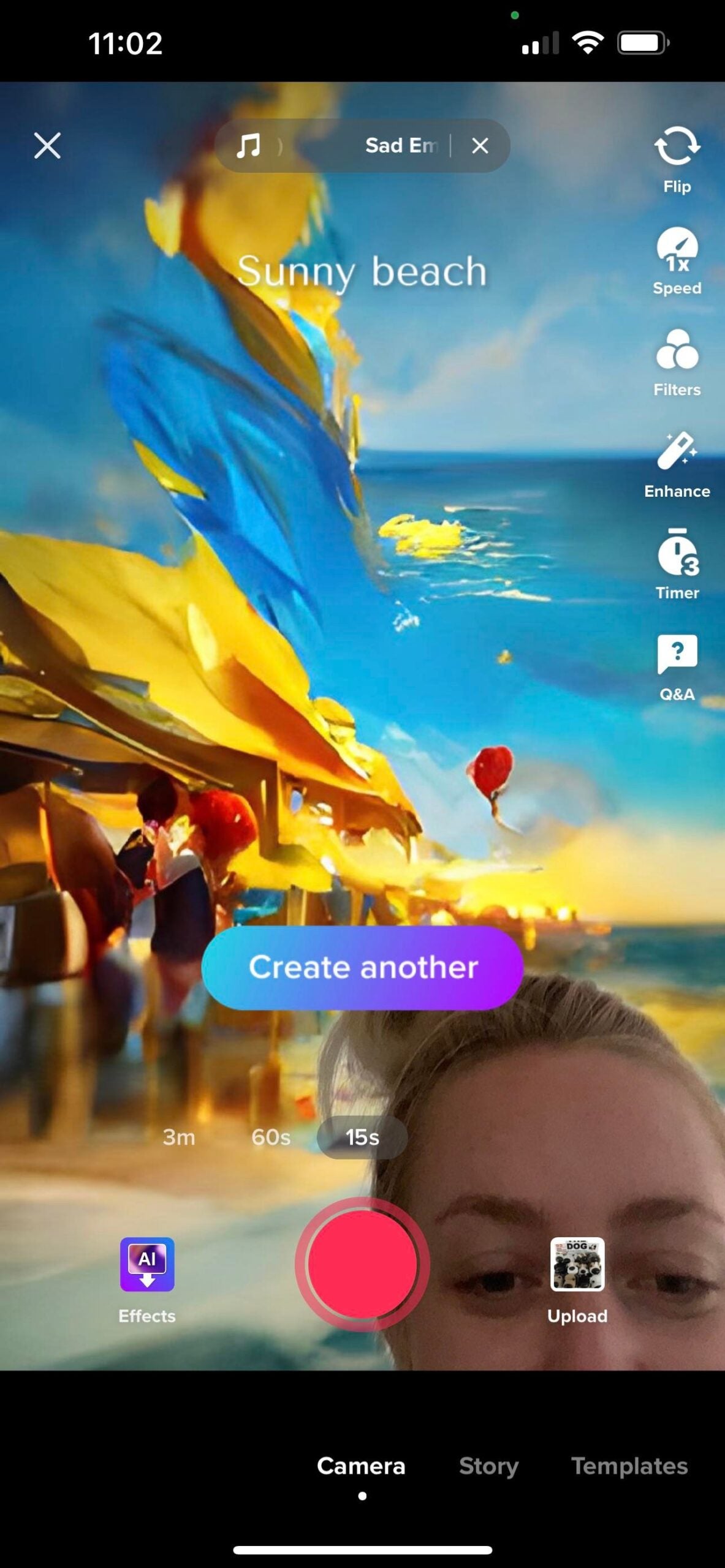
TikTok’s latest feature wears a striking resemblance to viral sensation DALL-E 2 from OpenAI, but it’s not as good – and that could be the point.
If you’ve been on any social media platform recently, you’re bound to have encountered the DALL-E 2 OpenAI generator.

Access deeper industry intelligence
Experience unmatched clarity with a single platform that combines unique data, AI, and human expertise.
DALL-E 2 is the latest iteration of DALL-E, which was originally released in 2021 by OpenAI. The company’s solution enables users to write prompts that are then generated by the AI-powered image system.
You can ask it to generate pictures like “Cookie Monster reacting to his cookie stocks tanking” or “A daredevil skateboarding cat named Red Bull doing a trick, in the style of a hyper realistic photo” and DALL-E 2 will follow those prompts with stunning results.
DALL-E 2 is still in beta and the waitlist to use the system is still long, although OpenAI hopes that at least one million users will be able to access it within the next few weeks, according to TechCrunch.

US Tariffs are shifting - will you react or anticipate?
Don’t let policy changes catch you off guard. Stay proactive with real-time data and expert analysis.
By GlobalDataHowever, it seems like other companies are closing in on the AI-generated image startup.
DALL-E and TikTok aren’t alone: The AI-generated image space is getting crowded
For starters, there’s Google Imagen. In May, the search giant published a white paper about Imagen, which it describes as a system for “photorealistic text-to-image diffusion models with deep language understanding”. It’s a bit of a mouthful, but it means that it essentially does what DALL-E does. Imagen hasn’t been released to the public yet.
Similarly, research lab Midjourney has created a similar solution which made the news in June when it generated the Economist’s June 2022 cover.
TikTok is now muscling into the space too with its latest feature “AI Greenscreen”.
At its core, AI Greenscreen is a very basic text-to-image AI-powered art system. The popular video-sharing platform allows users to write in prompts that the software will generate as an image. In proper TikTok fashion, the created image can then be used as a background to a video.
It’s worth noting that TikTok’s new effect is a less-powerful version of the breakout phenomenons Midjourney, DALL-E 2 and Imagen.
The art users are able to create certainly looks cool but is stuck firmly in the “abstract” lane rather than aiming for photorealistic imagery like the other aforementioned software.
However, as The Verge notes, the limitations of TikTok’s AI may be intentional.
Photorealistic models need a lot of computing power to create which would be an expensive and time-consuming update to the app, which would be a huge drain for TikTok.
Also, TikTok is home to over a billion users of varying age groups – a completely photorealistic AI art system could be a nightmare for the company’s anti-porn and violence policy,
But despite its limitations, users have embraced of the simple text-to-image AI and created a myriad of trends in true TikTok fashion.
People are inputting their birthday and seeing “how they died in a past life”, as well as releasing videos with the caption “apparently this filter shows”, claiming the AI paints future soulmates, worst fears, etc.
It’s a trend that will likely help keep users interested in the relatively barebones AI system.
“I’m having so much fun playing with the AI greenscreen filter on TikTok,” said one Twitter user.
Despite AI Greenscreen’s limitations, the public has noted its similarities with the DALL-E system.
“TikTok has AI Greenscreen backgrounds… this is all happening so fast,” said one Twitter user. “[DALL-E] better shape ups as other companies are coming through like a freight train.”
It’s clear that AI art is growing fast and will continue to capture the imaginations of people around the world – especially now it’s in the hands of TikTokers.
It’s a clear indication of how fast the disruptive technology is growing in popularity and hitting the mainstream.
Verdict has contacted TikTok and Open AI for comment.
GlobalData is the parent company of Verdict and its sister publications.







